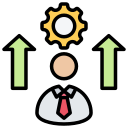Basics of Coding and Programming
Coding and programming are fundamental skills in today’s technology-driven world, enabling individuals to create software, websites, applications, and much more. Understanding the basics empowers you to communicate with computers, develop problem-solving abilities, and unlock a universe of creative possibilities. This guide introduces the core concepts of coding and programming, illustrating what they involve, the logic behind them, and why they matter. If you’re just getting started, or looking to solidify your foundational knowledge, these sections will help you grasp the essential building blocks of programming and set you on a path toward further growth and discovery in the tech field.
What is Coding and Programming?
Coding involves translating human logic into a language that computers can understand. At its core, coding is the act of writing lines of code using a specific syntax, defined by programming languages like Python, JavaScript, or Java. Each line instructs the computer to perform specific operations, whether it’s displaying text on the screen or performing calculations. Although coding is sometimes used as a synonym for programming, it typically refers to the actual act of writing code, rather than planning, testing, and architecting complex systems. Coding is an accessible way for beginners to start interacting with computers, providing immediate feedback and fostering problem-solving skills as users learn how computers interpret their commands literally and precisely.

Key Concepts of Programming Languages
01
Understanding Syntax and Semantics
Syntax in programming refers to the set of rules and structure that a language follows, similar to grammar in human languages. Just as sentences must be correctly structured to convey meaning, code must adhere precisely to a language’s syntax for computers to interpret it. Even a small mistake, like a missing bracket or incorrect command, can cause errors or unexpected results. Semantics, on the other hand, relates to the meaning behind the syntax, defining what each statement does within a program. Mastering both syntax and semantics is crucial for writing effective, error-free code and for being able to diagnose and fix issues as they arise.
02
Popular Programming Languages
There are hundreds of programming languages, each designed for specific purposes and offering distinct features. Some, like Python, are known for their readability and ease of use, making them popular among beginners. Others, like C++, provide high performance for applications like gaming or operating systems. Java and JavaScript dominate web and enterprise development, while languages like Swift power mobile apps on Apple devices. Choosing which language to start with often depends on personal goals, project requirements, and community support available for learning and troubleshooting.
03
Language Paradigms and Their Impact
Programming languages are often categorized by their paradigms—ways of organizing and structuring code. Common paradigms include procedural, object-oriented, and functional programming. Each paradigm offers a unique approach to solving problems and organizing code. For example, object-oriented programming focuses on creating reusable objects with encapsulated data and behavior, while functional programming emphasizes immutability and the use of pure functions. Understanding these paradigms helps programmers choose efficient solutions, write clearer code, and adapt to new languages, as core concepts often carry over across paradigms.
The Logic and Flow of Programming

Algorithms: The Foundation of Logic
At the heart of every program are algorithms: step-by-step instructions that dictate how to perform a task or solve a problem. Designing a good algorithm requires breaking down complex problems into manageable steps and organizing them in the right order. Algorithms can be as simple as adding two numbers or as complex as managing a million-user social network feed. Understanding how to design, analyze, and implement algorithms is fundamental to programming, helping developers ensure their innovations are efficient, scalable, and maintainable. The ability to create and optimize algorithms distinguishes an effective programmer from a mediocre one.

Control Structures: Making Decisions
Control structures give programs the power to make decisions and respond to changing situations. These include commands like “if”, “else”, and “switch”, which allow code to execute different actions based on specific conditions. By using control structures, programmers simulate decision-making logic, enabling software to adapt, handle errors, and offer multiple functionalities. Mastery of control structures is essential for crafting interactive applications, games, and systems that must respond intelligently to user input and real-world conditions. Without these logical structures, programs would be linear, predictable, and far less useful.

Loops: Repetition Made Easy
Loops are control structures that repeat a set of instructions until a certain condition is met. Common types include “for” loops, “while” loops, and “do-while” loops. They are incredibly powerful for reducing code duplication, automating repetitive tasks, and handling collections of data. Whether you’re processing a list of thousands of names or animating objects in a game, loops streamline workflows and save countless hours of manual effort. Learning when and how to use loops effectively is an indispensable skill, enabling programmers to write concise, efficient, and scalable code.
